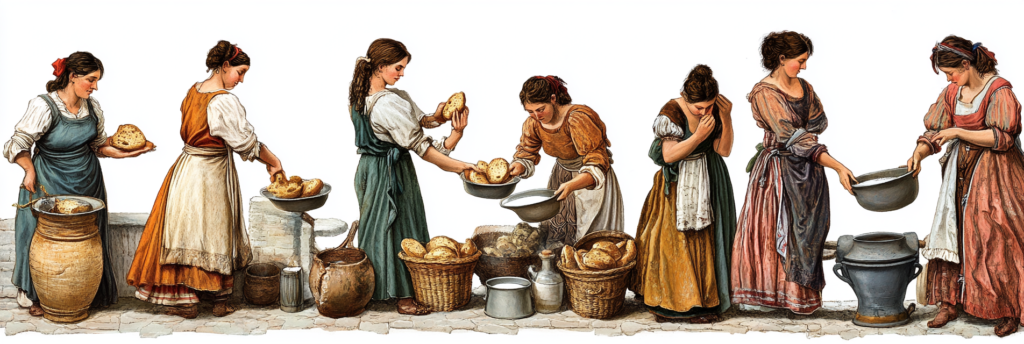
Spanish Version
It’s not a Spanish version The comparison to French toast is inevitable, but the differences are telling. French toast, with its eggy custard and breakfast-table ubiquity, feels like a morning indulgence. Torrijas, on the other hand, are firmly in the realm of dessert or snacks, often enjoyed during Holy Week in Spain, the solemn period leading up to Easter. There’s something almost ceremonial about them, as if they carry the weight of tradition in every bite. And while French toast might be made with fresh, fluffy bread, torrijas demand staleness—a quality that, in this context, becomes a virtue. The bread must be sturdy enough to withstand the soaking and frying, emerging not as a soggy mess but as a crisp, golden delight. Much like the Pâté de Pâques of Provence, torrijas remind us that the most meaningful foods often emerge from necessity rather than luxury. The process of making torrijas feels like a small act of alchemy. You take something dry and lifeless—stale bread—and, through a series of steps, transform it into something rich and satisfying. It’s a reminder that even the most ordinary ingredients can become extraordinary with a little care and creativity. And while the recipe itself is straightforward, there’s a kind of magic in the way the bread absorbs the spiced milk, the way it crisps up in the hot oil, the way it glistens under a drizzle of honey. In Spain, torrijas are more than just a dessert; they’re a cultural touchstone, a dish that connects the present to the past. They evoke memories of family kitchens, of Holy Week processions, of the simple pleasure of something sweet after a meal. And while they may not have the global fame of French toast, they have a depth of history and tradition that makes them uniquely special. To eat torrijas is to taste a piece of Spain itself—a country that knows how to turn the ordinary into the extraordinary.Recipe:
Ingredients:-
- 1 loaf of stale bread (preferably a dense, crusty bread like sourdough or baguette)
-
- 2 cups of whole milk
-
- 1 cinnamon stick
-
- 1/2 cup of sugar
-
- 2 eggs
-
- Olive oil or vegetable oil, for frying
-
- Honey or syrup for serving
Prepare the Bread:
-
-
Cut the bread into 1-inch thick slices.
-
If the bread is fresh, leave it out overnight to dry.
-
Make the Milk Mixture:
-
-
In a saucepan, combine the milk, cinnamon stick, and ¼ cup of sugar.
-
Heat over medium heat, stirring occasionally, until the sugar dissolves and the milk is hot (but not boiling).
-
Remove from heat, take out the cinnamon stick, and let it cool slightly.
-
Prepare the Eggs:
-
-
In a shallow dish, beat the eggs
-
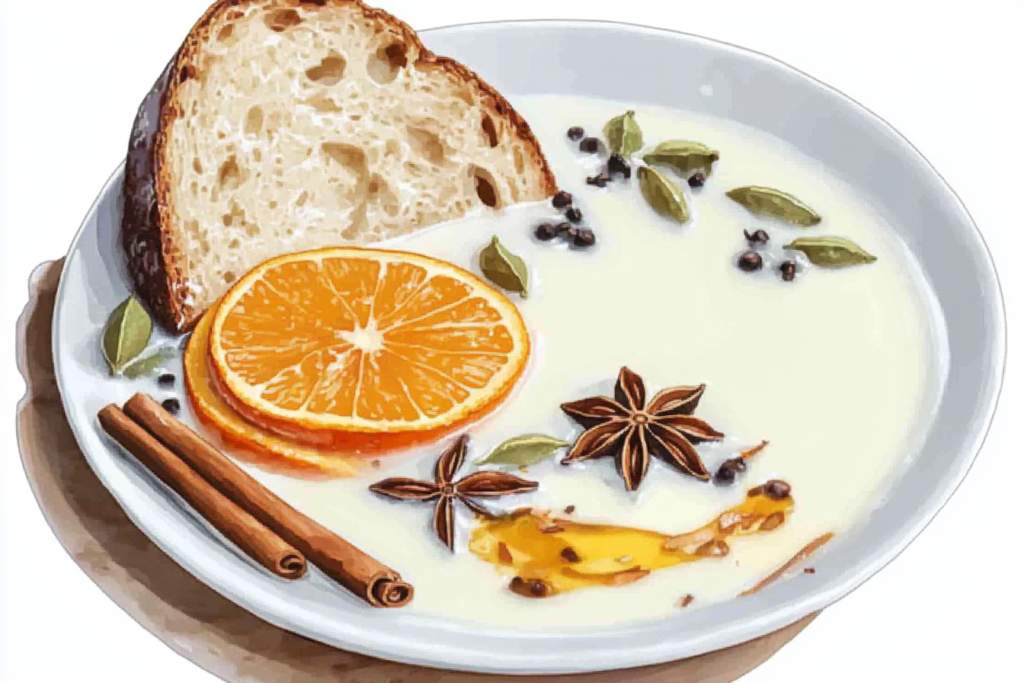
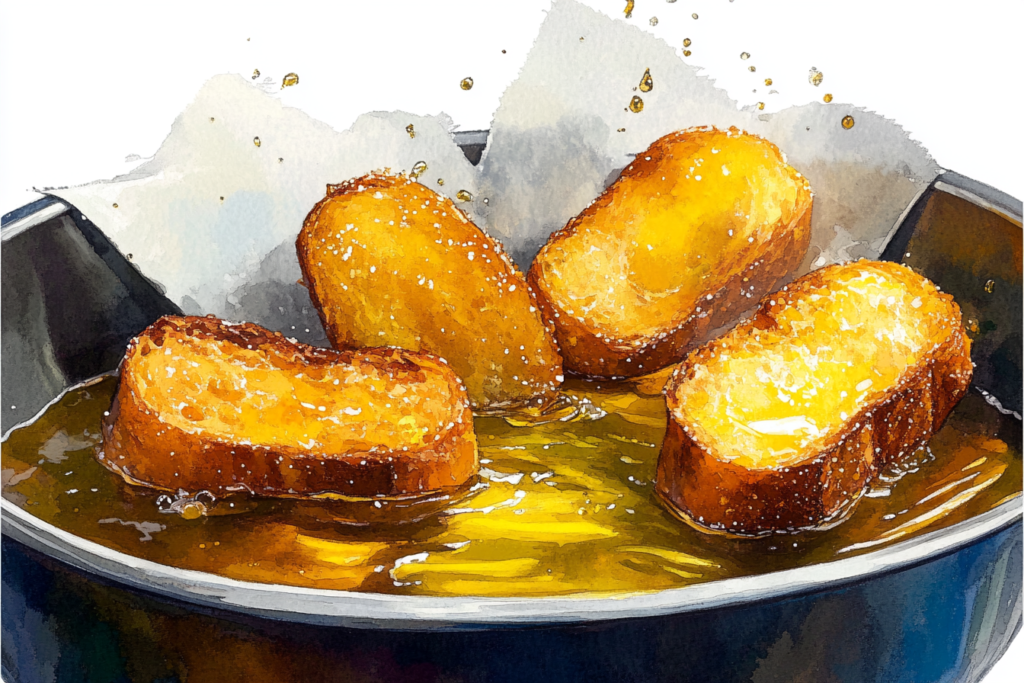
Soak the Bread:
-
-
Dip each slice of bread into the warm milk mixture, ensuring it’s fully soaked but not falling apart.
-
Then, dip the bread into the beaten eggs, coating both sides.
-
-
-
In a large skillet, heat enough oil over medium-high heat to cover the bottom of the pan.
-
Fry the soaked bread slices until golden brown on both sides, turning once.
-
Remove and place them on a paper towel-lined plate to absorb excess oil.
-
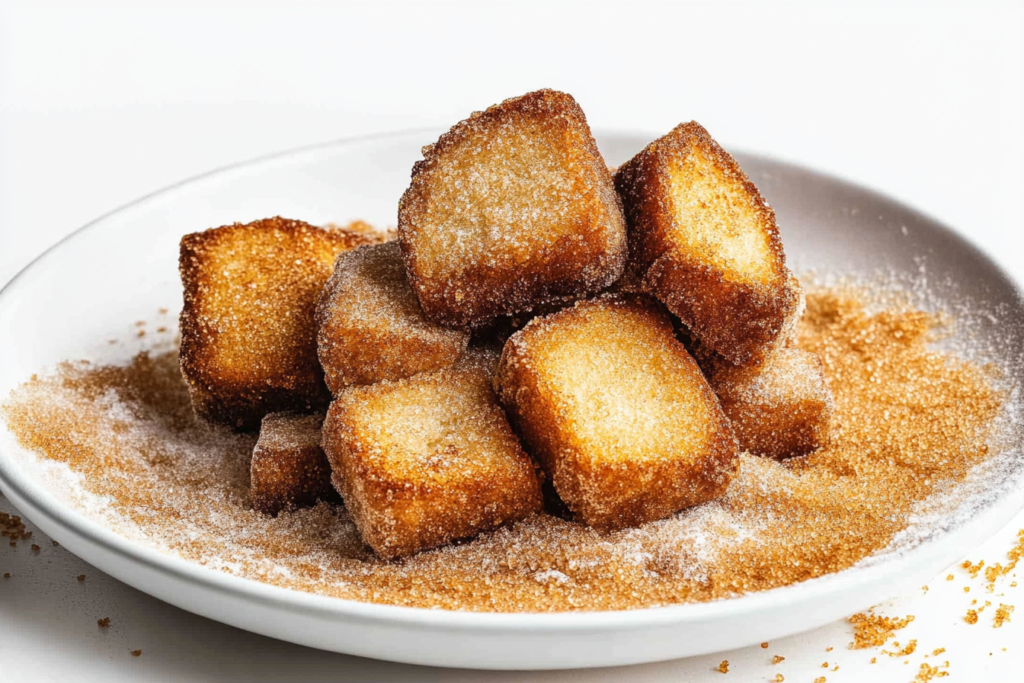
 Coat with Cinnamon and Sugar:
Coat with Cinnamon and Sugar:
-
-
Mix ½ cup sugar and 1 tsp ground cinnamon in a bowl.
-
While the torrijas are still warm, roll them in the cinnamon-sugar mixture.
-
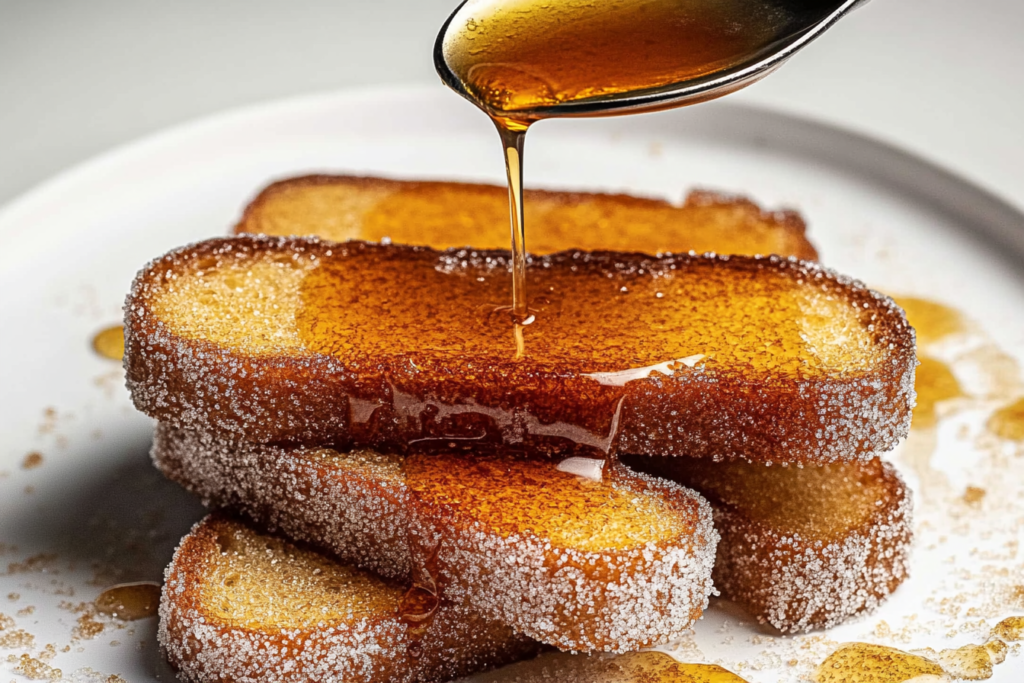
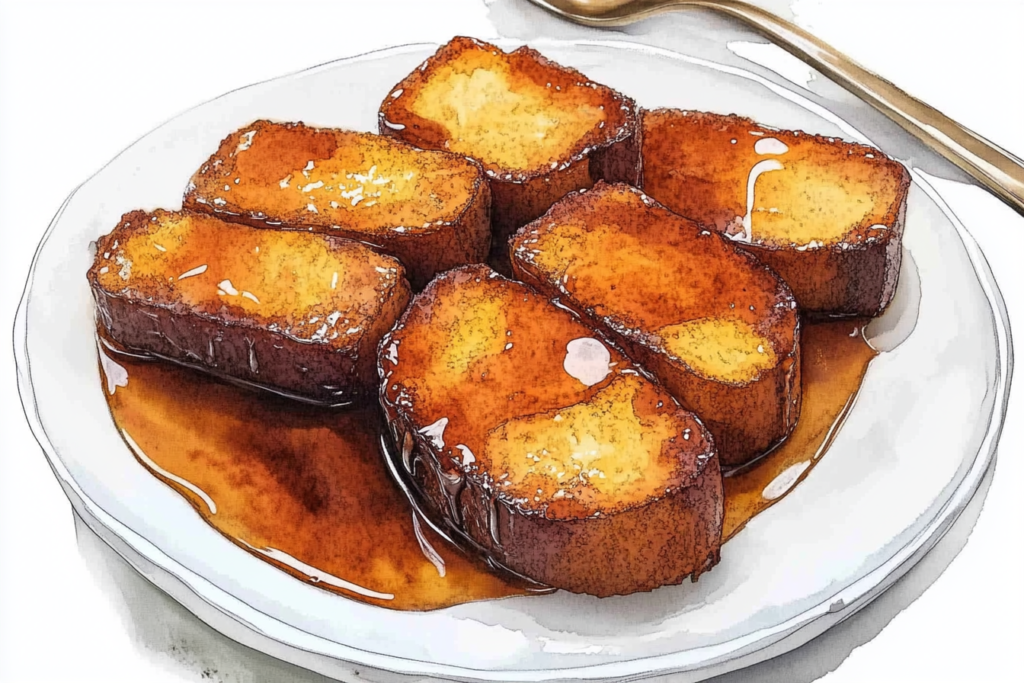 Serve the torrijas warm, drizzled with honey or syrup.
Serve the torrijas warm, drizzled with honey or syrup.






